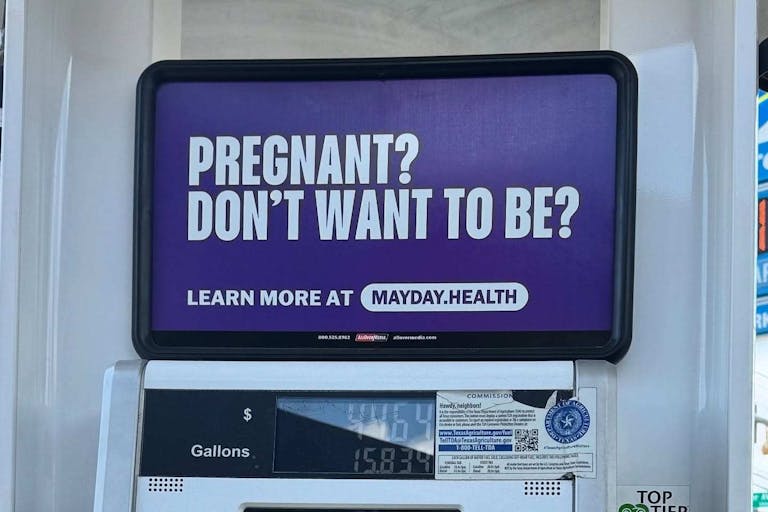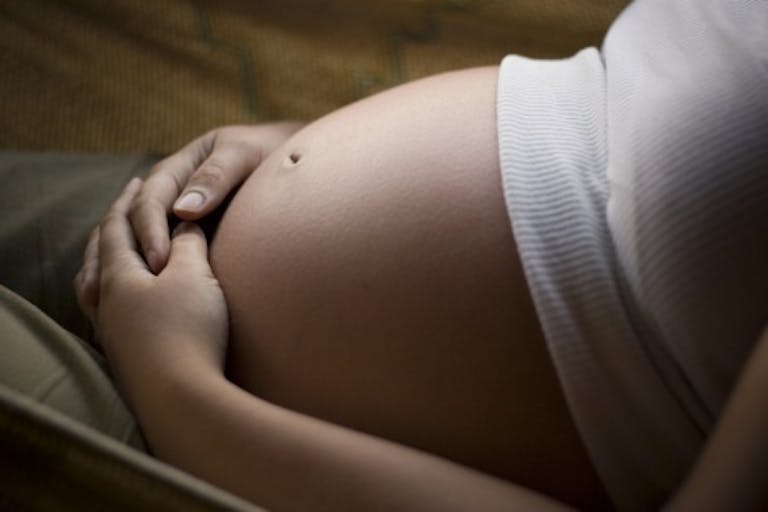
South Dakota sues Mayday Health over gas station abortion ads
Bridget Sielicki
·
Feminists stifle the truth about women’s fertility
Maybe because American women have the ability to say no to pregnancy whenever we choose, we just assume we have the same power to say yes when the time is right. It’s fine to have that abortion in your 20s because you’re “not ready,” or keep putting off your dream of becoming a mother to focus on career in your 30s. Pregnancy will happen when you decide you’re ready…right?
Not so. Last week, Cassy Fiano reported on a new British ad campaign called “Get Britain Fertile.” The ad features British TV presenter Kate Garraway, who had children at age 38 and 42, and now says, “I wish I’d had my babies younger.” Garraway pushed the limits of female fertility, and now it’s too late to have a desired third child.
Needless to say, Aviva Shen of Think Progress hates the campaign, claiming it “scares” women and tries to “push women into a panic.” She claims that women are well aware that their fertility declines dramatically in their 30s and 40s.
Are they? Before writing this post, I turned back to the book Unprotected: A Campus Psychiatrist Reveals How Political Correctness in Her Profession Endangers Every Student by Dr. Miriam Grossman, my former boss. Grossman wrote an entire chapter on how young, highly educated women have an excellent understanding of birth control – but unrealistic expectations about fertility.
Grossman introduces us to Amanda Anderson, a 38-year-old doctorate student. She consciously chose to delay marriage and motherhood through her 20s and 30s, and now feels desperate to have a baby. Unfortunately, her chances of conceiving each month have fallen by more than 75 percent since she was 30 years old.
As Grossman explains, by a woman’s late thirties, “the possibility of miscarriage has tripled, the rate of stillbirth has doubled, and the risk of genetic abnormality is six times as great.” In fact, new research has linked autism in children to parents over age 35, as Shen admitted in her Think Progress piece.
Shen suggests that fertility treatments are a viable game plan for women who postpone childbearing. As Grossman explains, fertility treatments for women in their late 30s and 40s are extremely expensive and have a low success rate. Clomid, a drug that stimulates ovulation, costs $3,000 per month, and has a 5- to 10-percent success rate at Amanda’s age. If that fails, Amanda’s second option is in-vitro fertilization, which costs $15,000 per attempt. At age 39, a woman has an 8-percent chance of having a baby after IVF. At age 44, her chance of a successful pregnancy has fallen to 3 percent.
Article continues below
Dear Reader,
In 2026, Live Action is heading straight where the battle is fiercest: college campuses.
We have a bold initiative to establish 100 Live Action campus chapters within the next year, and your partnership will make it a success!
Your support today will help train and equip young leaders, bring Live Action’s educational content into academic environments, host on-campus events and debates, and empower students to challenge the pro-abortion status quo with truth and compassion.
Invest in pro-life grassroots outreach and cultural formation with your DOUBLED year-end gift!
“With women delaying childbearing as never before, the offices of fertility doctors are filled with fortysomething patients desperate for a baby,” Grossman writes. “’Most of the women who come in here are healthy,’ said the director of the largest fertility clinic in San Francisco. ‘They’re here because they’re forty.’”
Despite these grim statistics, women are still misinformed about fertility. Unbelievably, a 2001 survey showed that 89 percent of young, high-achieving women believed they would be able to get pregnant in their 40s. In the British survey conducted by Get Britain Fertile, 70 percent of the childless 25- to 35-year-old women planned to have children someday, and most believed they’d have no trouble at all getting pregnant.
Who’s to blame? Fertility experts point the finger at the media, who hype births to fortysomething celebrities – rich women who can afford endless rounds of IVF, surrogates, and donor eggs. (In Grossman’s book, fertility doctors called the media hype surrounding midlife pregnancy “the perpetuation of a dangerous myth.”) But we can also blame the feminists.
Back in 2001, the American Society of Reproductive Medicine sponsored a campaign called Protect Your Fertility. The campaign highlighted the four major causes of infertility in the U.S.: STDs, smoking, obesity, and – the number-one cause – advancing age. The campaign died quickly, mostly thanks to the ire of the National Organization for Women. NOW claimed it sent “a negative message to women who might want to delay or skip childbearing.”
NOW and other feminist groups are no doubt patting themselves on the back for stifling these education campaigns and shifting women’s attention back to their careers. But the middle-aged women crowding fertility clinics will have little thanks to give when they realize the truth: there was a window of opportunity for motherhood, and the window has closed.
Just as women deserve a thorough education on how to prevent pregnancy, they need to know the facts about how and when to achieve a healthy pregnancy and birth.
Live Action News is pro-life news and commentary from a pro-life perspective.
Contact editor@liveaction.org for questions, corrections, or if you are seeking permission to reprint any Live Action News content.
Guest Articles: To submit a guest article to Live Action News, email editor@liveaction.org with an attached Word document of 800-1000 words. Please also attach any photos relevant to your submission if applicable. If your submission is accepted for publication, you will be notified within three weeks. Guest articles are not compensated (see our Open License Agreement). Thank you for your interest in Live Action News!

Bridget Sielicki
·
Analysis
Cassy Cooke
·
Analysis
Cassy Cooke
·
Analysis
Cassy Cooke
·
Analysis
Cassy Cooke
·
Analysis
Nancy Flanders
·
Human Rights
Ashley Herzog
·
Human Rights
Ashley Herzog
·
Human Rights
Ashley Herzog
·
Analysis
Ashley Herzog
·
Opinion
Ashley Herzog
·